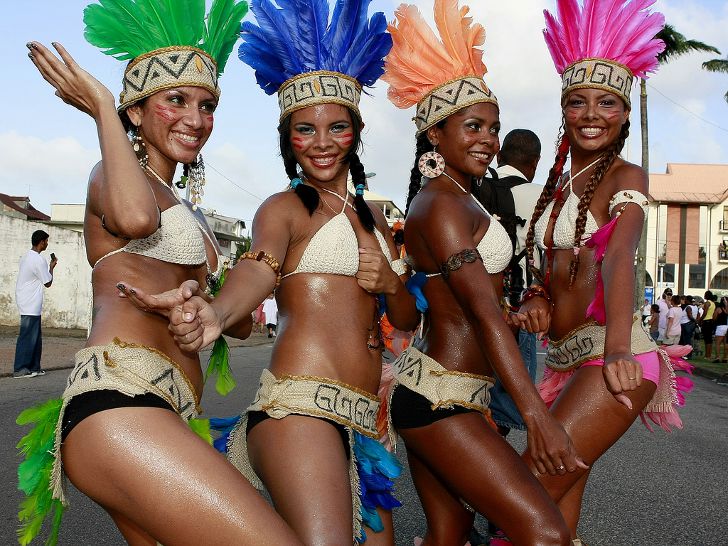It was French settlers who brought European carnival customs to French Guiana. Participation in the celebrations was a privilege for the free residents of the colony. African slaves were not allowed to participate, but they practiced carnival in clandestine ways. The French Guiana Carnival was officially established in 1848, following the abolition of slavery. Today’s carnival is a mix of French, African, Creole, Brazilian and even Chinese cultural traditions.
The carnival in French Guiana takes place between Epiphany and Fat Tuesday. Fat Tuesday, also known as Shrove Tuesday or Mardi Gras, is a moveable feast, its date depends on the date of Easter Sunday. On Fridays throughout the carnival season, locals eat the galette des rois (king cake). It’s a traditional cake representing the Three Magi, also known as the Three Kinds. While in mainland France it is eaten only for Epiphany, in French Guiana it is served every Friday until Lent.
The carnival season begins to culminate on the Saturday before Ash Wednesday. On this day, carnival Queens known as Touloulous dance through the streets, inviting the men to join them. Touloulous wear petticoats, hoods, tights and long gloves, covering their face with Domino masks and speaking in disguised voices to retain anonymity.
Other traditional characters featured in the carnival include Neg’Marrons (men dressed in red loincloth and coated with molasses who represent fugitive slaves), Jwé farin (represents a baker), Zombi baréyo (a zombie character), Bobi (represents a bear led by a leash), Karolin (represents a rich woman), Soussouris (represents a vampire-like bat), Lanmò (represents death), and Diab rouj (red devil).
Sunday is the day of street parades (vides). Each year the parade has a new theme, and the participants are required to dress accordingly. The parade features lavishly decorated floats, units representing local communities, musicians playing traditional instruments, dancers in vibrant costumes. Brazilian groups are remarkable for their costumes similar to those that can be seen at the Carnival in Rio de Janeiro, while Asian groups incorporate traditional Eastern dragons. The biggest parade is held in Cayenne, it attracts thousands of spectators.
Monday’s highlight is a sham marriage ceremony with grooms in women’s dresses and brides in men’s suits. Fat Tuesday is the last day of the carnival. On this day, King Vaval makes an appearance, arriving in a canoe in the form of a straw effigy. Locals consider him the devil and soul of the carnival. The effigy is burnt at night, and on Ash Wednesday locals mourn the passing of the Carnival King.

Photo by Bernard




